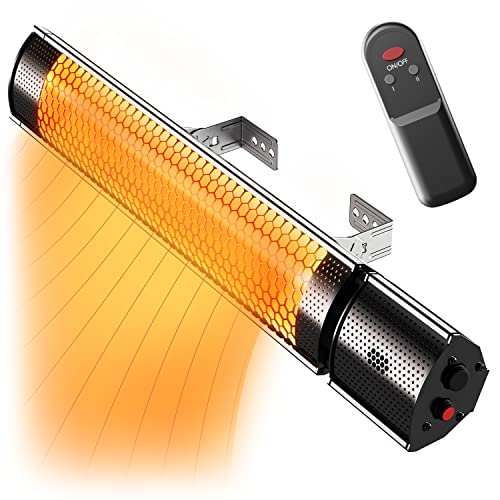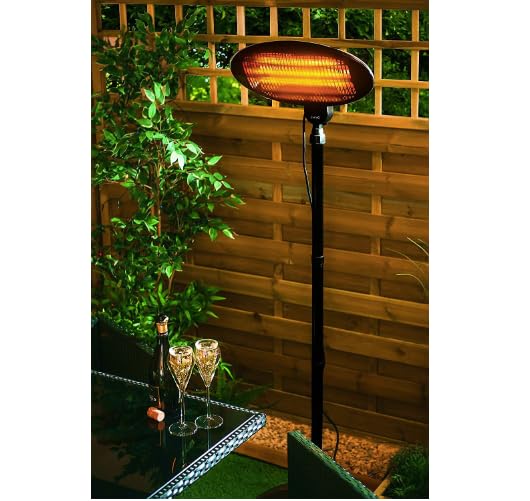Natural Gas Patio Heater
A natural gas patio heater is an excellent way to keep outdoor spaces warm. Its primary benefit is that it can be connected to existing natural gas lines (NG) and you won't have to be concerned about refilling your propane tanks.
However, there are a few factors to take into consideration before you decide on one. This article will go over the different choices, including heat output and safety, in addition to installation.
Cost
You can relax in your outdoor space throughout the evening by adding an outdoor heater that is natural gas. These heaters are available in various sizes and can be wall-mounted freestanding or affixed to a post. The right model should also contain features that make patio use more secure and easy. You can find units with an anti-slant function that will shut off the stove whenever it tilts more than 47 degrees. Some models are also made of durable materials such as stainless steel and aluminum for strength and corrosion resistance.
They are powered by propane, natural gas or electricity, and produce a maximum of 46,000 British thermal units (BTUs). Electric models plug directly into standard 120-volt outlets. They are the easiest and most practical to use however they do not provide the same heat as propane or natural gas models.
Propane
garden patio heater gas heaters are large and umbrella-like, and typically have a a hollow base that holds 20-pound liquid propane tanks similar to the ones you would use for a gas grill. The tanks are cheaper but they need to be filled frequently and cannot easily be moved. There are also smaller propane heaters that are tabletop designed to sit on top of tabletops and use 1-pound propane tanks.
The cost of a natural gas patio heater is determined by its dimensions and features, like wheels for easy mobility along with a quick ignition, as well as a remote that has different settings. You can also pick from a range of finishes, such as resin wicker, hammered bronze and decorative stone facing to complement your outdoor decor.
Hardwired
electric patio heater vs gas and natural-gas patio heaters require a professional installation. They can't be moved easily as gas and propane versions. However, they appear more sturdy and work as well as a space heater for indoor use. You can also get an attractive model that threads into rigid gas lines to add a stylish accent. The cost of a patio heater that is powered on natural gas is usually more expensive than heaters powered by electricity or propane.
Heat Output
Pay attention to the heat output of a natural-gas patio heater when shopping. The amount of BTUs reflects the warmth that your guests will feel and also how long it can keep your porch and balcony warm. The bigger the area you can heat, the greater the BTUs.
Gas
Best patio heater gas heaters can be used to enjoy the outdoors all year long, whether your area is covered or not. Most models are adjustable and operate on natural gas or propane. They can be mounted on the ceiling or walls or stand on their own. If you have limited space for floor space, you might want to think about a portable natural-gas patio heater with wheels that is powered by propane tanks. When installing a patio heater consider options such as gas shut-offs to avoid leaks if the flame is not lit or an anti-tilt feature that shuts off the fuel supply if the unit tilts more than 47 degrees.
The most efficient natural gas patio heaters provide plenty of warmth and don't take up too much space on a deck or in your backyard. The large models that are freestanding, which are reminiscent of floor lamps, provide radiant warmth to a larger area and are constructed from robust metal. Tabletop models with a
small patio gas footprint work well in intimate dining areas. Models that use propane or natural gas are available in a range of attractive finishes.
If you want a more elegant look, you can find patio heaters that use natural gas or propane, and have an hammered-bronze or resin-wicker front, or decorative stone front. Other features to look out for include the ignition system that is a push button that shuts off the safety valve when the unit is tippy and rotary dial control that allows you to easily adjust and set the flame. Some of the
best gas patio heater propane heaters for patios are made from stainless steel to guarantee durability and strength, while others are made of aluminum to make them lighter in weight.
Safety
Gas patio heaters can be the perfect way to extend your time outdoors. They come in a range of styles, from free-standing models that contain a propane tank to those that are attached to your home's natural gas line. The style you pick will depend on your budget as well as how much you'd like to heat your home.
Propane-fueled heaters are typically mounted on a pole or stand that has a reflector dome or shield and a base that holds a 20-pound propane (LP) tank. These heaters are available in a range of power outputs, ranging from 41,000 BTUs to more than 100,000. They come with safety features such as an automatic shut-off valve, and an electronic lighter to enable easy ignition. They also come with a tip-over button that automatically shuts off the flow of gas if the unit tip over.
Portable LP gas heaters for patios should only be used outside on flat, hard noncombustible, nonflammable surfaces. They should be kept at minimum three feet away from all materials that are combustible and at least 12 inches from anything that could ignite including fences and trees. The fuel cylinder should be kept outside and at least three feet from any windows, stairways, building and doors. Check the hoses and connection points of propane patio heaters for leaks frequently. You can test these connections by using a soapy water solution. Examine the UL or CSA marks on the patio heater made of propane to ensure that it meets national safety standards.
A
natural gas gas patio heater connects to the natural gas line in your home and provides greater BTU capacity than propane units. It is more expensive to run, however it's safer and doesn’t require a replacement propane tank. These units are ideal for patios in residential buildings as well as restaurants, apartment and condominium buildings.
Whatever style of patio heaters you choose ensure that they are approved for indoor use or outdoor use. Propane and natural gas patio heaters can release carbon monoxide if they are used indoors in an enclosed space, which can cause fatal harm. Electric patio heaters do not emit any pollutants, and are safe to use in a closed space.
Installation
Natural gas patio heaters are connected to the gas line that is already in the home, so they don't require the propane tank that other types of outdoor heaters do. This makes them an easier and safer alternative to traditional propane heaters. They also emit less smoke than propane heaters. They do require professional installation and are more expensive than propane heaters.
These heaters are popular for both residential and commercial buildings. They can make your patio more comfortable even in the event that temperatures drop below freezing. These heaters are safe to use since they don't release heat onto the surface, but instead radiate heat through the inside of the silvered cover. These heaters are also economical to run as they don't draw on a large amount of electricity.
Patio heaters can be mounted on the wall or freestanding. If wall-mounted, they must be placed at least 8 feet above the ground to ensure that people are not in the path of radiant heat. Freestanding heaters require minimum clearance of 14 feet to keep out combustible materials from the area.
These heaters come with safety features that protect people and the property in the event of a malfunction. Most heaters have an off valve for tilt that will stop the heater from using electricity or fuel in the event that it slides or tilts. There is also a sensor that detects flame to avoid accidental ignition.
To ensure that gas heaters are safe to use, it's recommended to hire a licensed plumber to install them. These professionals must be familiar with state and local plumbing codes and heating codes to ensure that the gas lines are sized correctly to accommodate the heaters. They should also be certified to examine gas appliances for leaks.

Other expenses may be added to the labor and materials costs of the installation of a gas patio heater. This includes removing, replacing, or repairing any damaged surfaces or structures. These costs include framing and finishing of surfaces, as well as plumbing systems. Other expenses that could be incurred include bringing existing systems into compliance with the current building codes. These costs should be included in the overall estimate of the project.




